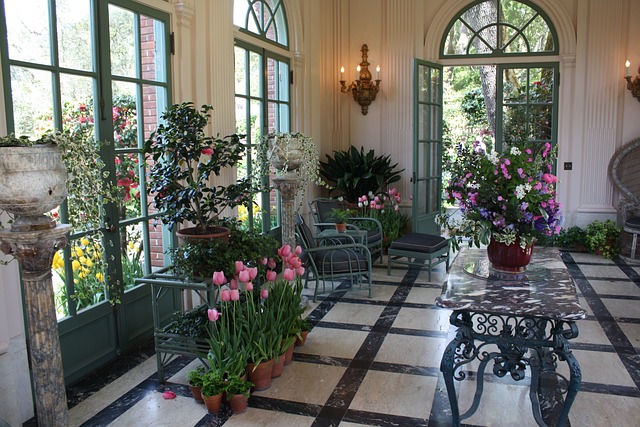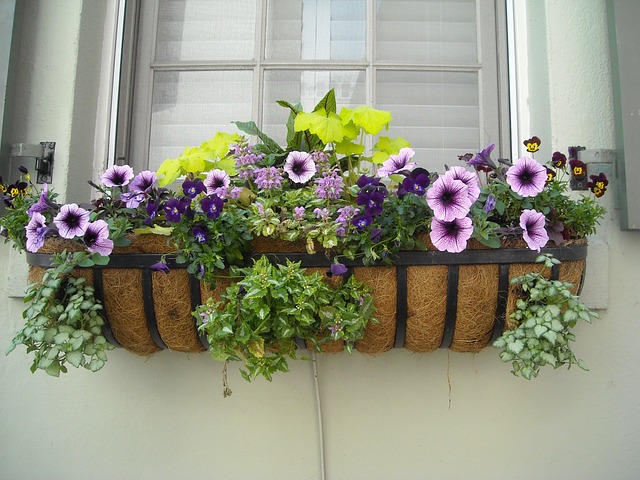Introduction – Cultivating Plants Indoors
Indoor gardening is the practice of cultivating plants indoors. You can do this type of gardening in several ways, including container gardening, hydroponics, and aeroponics. Indoor gardens are often used to grow fruits, vegetables, herbs, and Flowers. Indoor gardening offers many benefits, including year-round growing, controlled climates, and protection from pests and diseases. In this post, I’m sharing a detailed guide for indoor gardening beginner. So, stay tuned!
Indoor gardening also comes with some challenges, such as the need for artificial lighting and proper ventilation. Growing a garden is not as easy as it looks and requires dedication from the gardener to ensure that the plants receive the proper care. Additionally, indoor gardening takes knowledge of different types of plants, their growth requirements, and how to provide them with enough light and water. I will discuss indoor gardening in the next sections.

How To Start Indoor Gardening?
A great way to avoid the restrictions of staying within the March-June planting months is the indoor garden. You can grow many plants indoors with the right conditions and a little know-how. Most houseplants originate in tropical or subtropical regions, so they’re used to warm temperatures, high humidity, and bright, filtered light. To recreate these conditions in your home, you’ll need to provide the right water and light and maintain a consistent temperature. You should also choose plants that are well-suited to life indoors. Once you have the supplies and plants, you can start growing your indoor garden.
Select The Containers
Containers are an important part of indoor gardening. They provide the space for plants to thrive and the environment for them to grow. Containers come in a variety of shapes, sizes, and materials. The most common materials for containers are plastic pots, ceramic pots, fabric pots, and window boxes. But guess what, there are eco-friendly versions of planting pots so make an effort to pick one that has the materials or production processes that match the ethos of being less carbon intensive.

Plastic pots are lightweight and easy to move around, and they come in a variety of sizes.
Ceramic pots are more decorative and can come in a variety of colors and designs.
Fabric pots are made of a breathable material that allows air to flow and promote root growth.
Window boxes are a great option for plants that prefer lots of sunlight.
No matter what type of container you choose, make sure it is able to provide adequate drainage for the plants.
Select Soil Type
To get started, you’ll need to gather some supplies. Potting soil is one of the most important ingredients for successful indoor plant growth. This type of soil is specially formulated to provide the right mix of drainage and moisture retention for potted plants. You’ll also need a container to hold your plants and potting soil. Choose a pot that is large enough to accommodate your plant’s root system and has drainage holes in the bottom. Fill the pot about three-quarters full with potting soil, gently remove your plant from its current container and place it in the new pot. Water thoroughly.
Select Location
Light is another crucial element for indoor plants. Most houseplants prefer bright, indirect sunlight. If you don’t have a spot in your home that receives enough natural light, you can use grow lights to provide the intensity and spectrum of light that plants need to grow. Place your plants near a window or under a grow light, and rotate them every few days so that all sides of the plant receive equal light.
Watering and Fertilizing Correctly
Watering and fertilizing your plants is also important for successful indoor gardening. The amount of water and fertilizer you give your plants will depend on the type of plant, its age, size, and the light it receives. Most houseplants need to be watered every two weeks or so. To ensure your plants stay healthy, avoid over watering them – let the soil dry out between watering sessions. You can also fertilize your plants every few months to provide additional nutrients.
Finally, indoor plants need warmth to thrive. Maintaining a consistent temperature around your plants will help them stay healthy and prevent them from going into shock when they experience sudden temperature changes. If possible, keep your indoor garden in an area of your home that doesn’t fluctuate too much in temperature, like a closet or an unused room. Creating these ideal growing conditions will help your plants stay healthy and flourish indoors. With a little effort, you can enjoy all the benefits of having a green thumb year-round!
What Plants Are Best For Indoor Gardening?
When it comes to indoor gardening, there are a few things to consider. First, you need to choose plants that can thrive in limited sunlight. Many houseplants originate in tropical climates and are used to living in the shade of taller trees. Second, you must select plants that are not too demanding in watering and soil nutrients. Over-watering is a common mistake among indoor gardeners, so choosing plants that can tolerate neglect is important. Finally, you need to pick plants that are not too messy or smelly. Nobody wants to live in a home that smells like a wet nursery. With these factors in mind, here are five plants that are well-suited for indoor gardening:
1. Snake Plant
Snake plants are extremely tolerant of low light conditions, making them ideal for rooms with limited windows. They also have shallow root systems that don’t require a lot of watering and produce very little leaf litter. A snake plant is also a great indoor plant because it is low-maintenance and can tolerate low light levels. It purifies the air by removing toxins like formaldehyde, benzene, and trichloroethylene. It’s known to improve air quality by producing oxygen at night.
2. Spider Plant
They’re easy to care for, producing long, cascading leaves that add a bit of drama to any space. Spider plants are a great choice for indoors because they are easy to care for and tolerate low light. They are also natural air purifiers, which can help to reduce indoor air pollution.
3. Peace Lily
Peace lilies are beautiful flowering plants that do well in shaded areas. They prefer moist soils, so they may need to be watered more frequently than other indoor plants. However, they make up for this by producing large, fragrant flowers.
4. Jade Plant
Jade plants are succulents that store water in their thick leaves, so they can withstand long periods of drought. They prefer bright light but can also tolerate low-light conditions. Just be sure not to over-water them!
5. Rubber Fig
Rubber figs are attractive evergreen trees that make excellent houseplants. They thrive in bright light but can also adapt to lower light levels. Rubber figs have deep root systems, so they’ll need to be potted in large containers with plenty of drainage holes.
Indoor Garden Pests And How To Get Rid Of Them
Indoor garden pests can be a real problem for gardeners. These pests can damage plants, and they can also spread disease. There are several different ways to get rid of indoor garden pests.
One way is to use traps. You can bait traps with various substances, and they can be placed around the garden’s perimeter. Another way to get rid of indoor garden pests is to use pesticides.
Pesticides can kill various pests, but they can also be harmful to humans and animals. If you choose to use pesticides, follow the instructions on the label carefully. Finally, you can also try to control indoor garden pests by changing the environment in which they live. For example, you can reduce the moisture levels in your home by using a dehumidifier.
You can also try to keep your house clean and free of clutter, as this will make it harder for pests to find places to hide. By taking these steps, you can help to keep your indoor garden pest-free.
Types Of Indoor Plant Pests
Indoor plant pests can come in many forms and cause a great deal of damage. Aphids are small, pear-shaped insects that suck the sap from plants and feed on the underside of leaves. Mealybugs are small, soft-bodied insects that form white, cottony masses on the leaves and stems of plants. Spider mites are tiny, eight-legged arachnids that feed on the underside of leaves, leaving a fine webbing. Scale insects are tiny, hard-shelled insects that feed on the sap of plants. Fungus gnats are small, dark-colored flies that lay eggs in the soil and feed on the root systems of plants.
Whiteflies are small, white, flying insects that feed on the underside of leaves. Thrips are small, slender insects that cause damage to flowers and leaves by sucking their sap. Leaf miners are small larvae that create tunnels between the upper and lower layers of leaves, resulting in a mottled appearance. Root-knot nematodes are microscopic roundworms that feed on a plant’s root system, causing the roots to become swollen and distorted. Powdery mildew is a fungal disease that causes a white, powdery growth on the leaves and stems of plants. All of these pests can cause a great deal of damage to indoor plants, so it is important to be vigilant in their detection and removal.
Keeping Your Pets Safe
It is important to keep plants out of reach of pets and to be aware of potentially toxic plants. If you have a pet-friendly garden, ensure that any potentially toxic plants are kept away from the areas where your pets play. Additionally, it is important to clean up any fallen leaves, flowers, or fruits from plants, as they may contain toxins that can be hazardous to pets. To ensure safety, inspect plants regularly for signs of insect infestations, and provide your pets with a clean and safe water source. For example we get a lot of questions about whether the purple waffle plant is safe for cats.
Conclusion
In conclusion, indoor gardening can be a fun and rewarding experience. With the right plants and careful tending, you can enjoy all the benefits of having a green thumb year-round! Just remember to choose plants suited for low light conditions, avoid over-watering, and keep an eye out for pests. With these tips in mind, your indoor garden will surely thrive!
